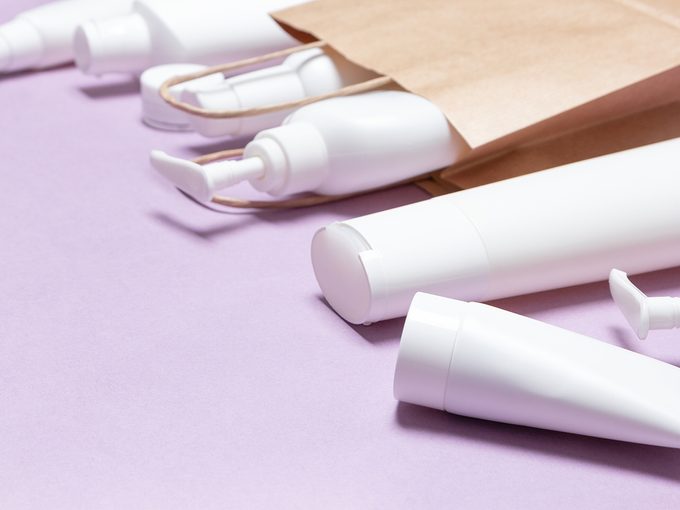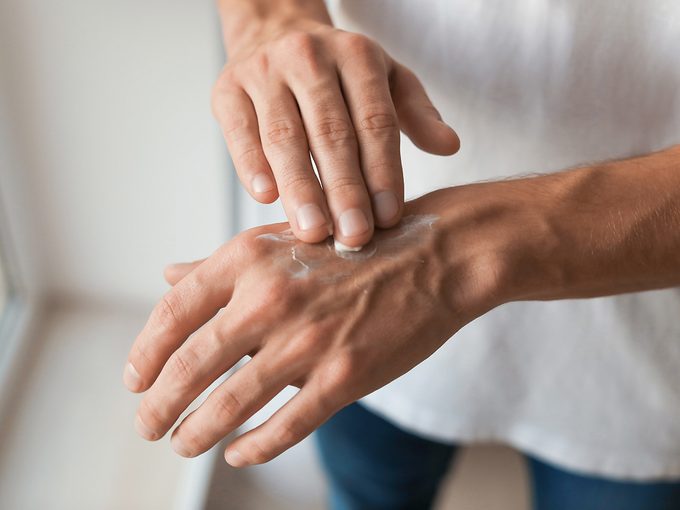How to Choose the Best Moisturizer For Your Skin This Winter
Overwhelmed by the options on the drugstore shelf? Our buying guide takes the mystery out of moisturizer.

Walk into any pharmacy and you’ll see rows of moisturizers, all promising something different. Figuring out which ones could work for you can seem overwhelming, especially because, according to the Harvard Medical School, “moisturizer” is more of a marketing label than a scientific one.
Generally speaking, though, it’s an umbrella term for products with three categories of ingredients: emollients, humectants and occlusives. Put simply, “a moisturizer hydrates skin and improves its texture,” says Dr. Lisa Kellett, a dermatologist in Toronto.
How Moisturizers Work
Our skin consists of three layers: the hypodermis (the deepest, made up of fat, nerves and blood vessels), the dermis (the in-between layer, which includes nerves, blood vessels, hair follicles and sweat glands) and the epidermis (the outermost layer of skin).
Throughout the day, water from the dermis evaporates through the epidermis and into the air via a process called transepidermal water loss (TEWL). On average, a person loses between 300 and 400 millilitres of water per day through their skin. Though this is a natural bodily process, environmental factors and medical conditions like eczema can contribute to a higher rate of TEWL and lead to dry, scaly or cracked skin.
This is where moisturizers come in. Emollients, like butters and oils, smooth the skin by filling spaces between dead cells, while humectant ingredients (including salicylic acid) work by pulling water from the dermis up to the epidermis, increasing topical skin hydration. Occlusives work to prevent TEWL by creating a barrier atop the epidermis, making it more difficult for water to escape.

Common Moisturizer Ingredients
Perhaps the most recognizable occlusive ingredient is petrolatum, a greasy petroleum by-product. (You likely know it as Vaseline.) While it may not be as popular in its pure jelly form as it once was, it remains one of the most effective moisturizers available, and petrolatum-based products make up a large portion of the market.
Many ingredients found in moisturizers have medical benefits in addition to hydrating properties. Petrolatum, for example, can speed the healing of scrapes by creating a barrier between the skin and the outside world.
Colloidal oatmeal—an emollient made by grinding oat grain into a powder—has anti-inflammatory properties that soothe itchy, dry skin. And lactic acid, a naturally occurring chemical exfoliant, helps rejuvenate the skin by removing dead cells and boosting collagen production.
How to Choose the Best Moisturizer For Your Skin
Age, environment and skin type are factors to consider when choosing a moisturizer, says Kellett. For instance, our skin loses oil glands as we age, meaning a thicker moisturizer to prevent dryness may be in order. Similarly, anyone living in a cold or windy environment should opt for a petrolatum-based pick, as it provides a barrier from the elements.
On the other hand, a petrolatum-based moisturizer might not be best for people with acne-prone or oily skin. For them, Kellett recommends a water-based one, which is lighter and won’t clog pores. And for those who want to avoid petrochemicals, there are alternatives, like products with beeswax, olive oil or shea butter, that are also effective at trapping moisture in the skin.
In the end, the best moisturizer for your skin is the one you’ll use, says Kellett. And making it part of your daily routine is as simple as brushing your teeth: once in the morning and once in the evening, ideally after you bathe. Not only is your face clean then, but the moisturizer will seal in the excess water on your still-wet skin, providing extra hydration.
Now that you know how to find the best moisturizer for your skin, brush up on these tips to avoid dry skin in winter.






